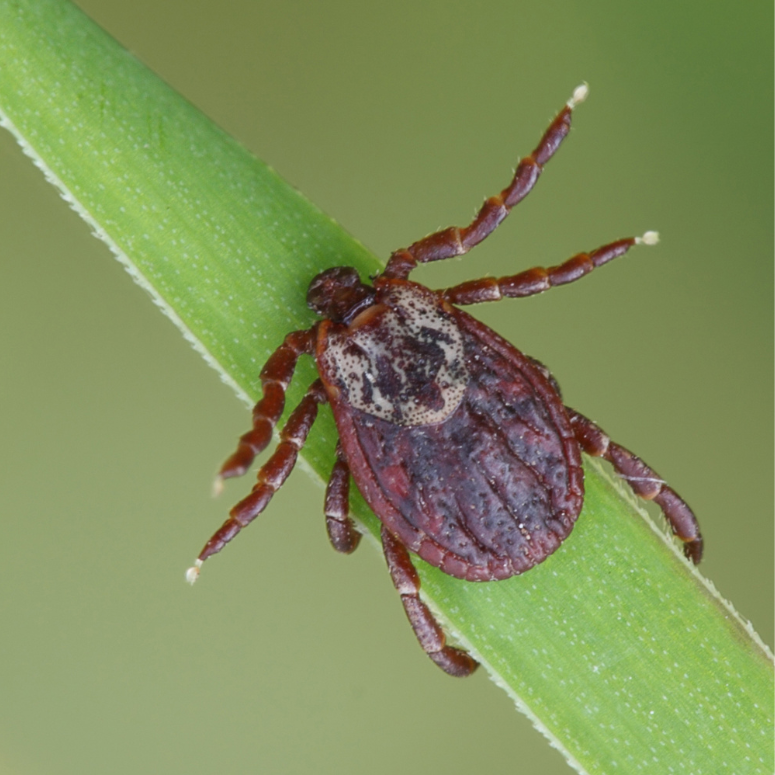
SEATTLE — A new agreement allows the Washington State Department of Health (DOH) to evaluate WTA's trip reports to help determine where people are encountering ticks in Washington state. A UW student worked with DOH to develop code to automate the process of reviewing trip report data for tick sightings.
WTA’s trip reports help hikers know what conditions are like on trails across the state. Daily, members of the public write about what they saw on trail, from trees being down to how bad the bugs were. Often — especially in the spring — they note whether they encountered ticks.
UW Master of Public Health student Alex Eisen wondered whether trip report data might improve our understanding of the distribution of tick species that serve as vectors for potentially serious diseases such as Lyme disease and Rocky Mountain Spotted Fever in Washington State. She was also curious whether there was a correlation between former wildfire perimeters and tick habitat, since the first thing to grow back after a wildfire is often brushy or light woody vegetation, which are prime environments for ticks to thrive in. So she created the tool for DOH last year as part of her degree program. It evaluates WTA trip reports for mentions of ticks and which trail they were on, and compares tick presence year over year since 1998, the beginning of WTA’s digital trip report archive.
While Alex’s research did not determine a definitive connection between wildfires and tick habitat, it did track an apparently growing presence of ticks in Washington. This could be partially due to an increase in trip reporting, as the number of trip reports increased as the internet became more commonly used. But tick habitat is also spreading. Ticks have been spotted in more parts of Washington in recent years; recent trip reports document sightings in the Issaquah Alps, the Yelm-Tenino area, and the Olympic Peninsula.
That has public health implications. As tick habitat changes, people previously less used to recreating in tick country may be unsure how to prevent tick bites and associated diseases if they encounter a tick on trail. Knowing where that is happening helps focus the Department of Health’s educational efforts. This year, they’re increasing tick surveillance in Island and Kittitas Counties due to a lack of information in those areas about western black-legged ticks, which can carry the bacteria that causes Lyme disease as well as other pathogens.
“One of the best ways to prevent tick-borne diseases is to know where and when to expect ticks and then take steps to reduce your exposure, like applying an EPA-registered tick repellent to exposed skin and performing thorough tick checks after outdoor activities. Reports from hikers help us at DOH understand tick distribution in Washington and get the message out,” noted Dr. Hanna Oltean, Senior Epidemiologist at WA DOH.
Members of the public are encouraged to write trip reports if they encounter ticks on their hikes. Posting trip report is free and takes about 2 minutes on wta.org or via WTA’s app, WTA Trailblazer. Just find the page for the trail you were on, then click the blue “Submit trip report” button to add text and a photo.
Anna Roth, WTA’s Digital Content Manager is excited about the potential for this new agreement: “Trip reports are a crucial way for hikers in Washington to be informed about conditions on trail and I’m thrilled that this new agreement will help DOH have a better understanding of where people are encountering ticks. Write those trip reports!”
The Department of Health can also receive online tick encounter reports and identify ticks if they are sent in, though ticks are not tested for the presence of pathogens.
About Washington Trails Association
Washington Trails Association (WTA) is the nation’s leading state-based hiking and trail maintenance organization powered by the passion and dedication of hikers. Every year over 5 million outdoor enthusiasts come to us for education, inspiration and opportunities to protect and advocate for public lands. Together we work to ensure that Washington’s trails remain sustainable and accessible to everyone for generations to come. By fostering a welcoming environment and engaging with the hiking community, WTA is committed to nurturing an inclusive organization where everyone feels valued, represented and able to contribute to the future of trails.
About Washington State Department of Health
DOHis your source for a healthy dose of information. Find us on Facebook, Instagram, and follow us on X (formerly Twitter). Sign up for the DOH blog, Public Health Connection.






